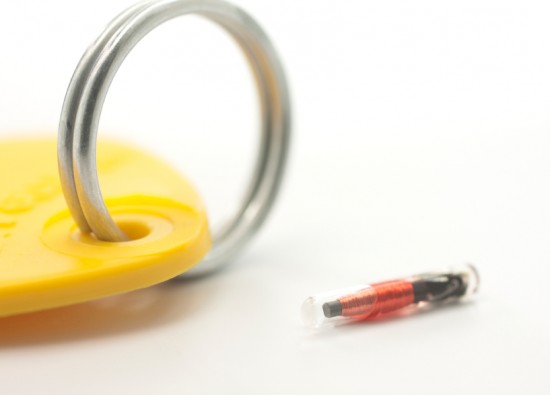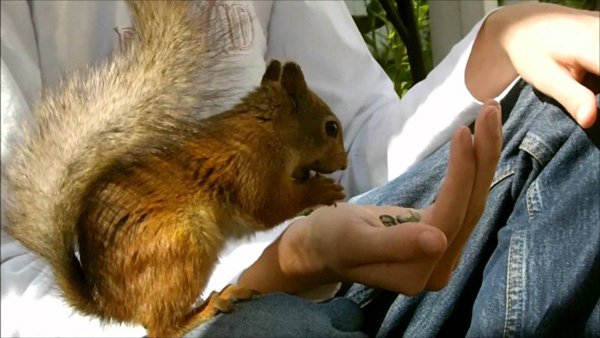
Most cat owners are tired of their scratched furnishings and carpets. Before they decide to declaw your pet, there are some things that may be useful.
Some people believe that declawing is not serious and painful procedure. They believe their cat will quickly recover and their furniture will be saved.
But it's not as simple as that.
The truth is cold and hard.
Actually, declawing is illegal in many countries around the world and there are a lot of reasons about that. Cat claws are not like human nails, not matter that this is a very popular belief. Claws are adhered to the bone and declawing includes the removal of the last bone. This is actually amputation of the last joint of the toe. Well, this doesn't sound like a simple procedure, does it?
This is quite a painful surgery and a long recovery period. Don't forget that the cat will have to use the feet to walk and to scratch in the litter box. This is an instinct and the cat will do it no matter how painful it will be.
Declawing is also a psychological problem ?the cat won't be able to defend because the claws, which are the main protection of the animal, are removed.
You probably wonder why the cat needs to defend herself when she lives indoor and doesn't have to worry about anything. Instincts don't disappear when the cat lives indoor. Declawing will make the cat fearful, she will start hissing and hiding when she sees unfamiliar people. In many cases, declawed cats stop using their litter boxes because after the procedure digging in the box is very painful.
Then how can cat owners save their cat furniture and carpets? Here are some helpful ideas you may use:
?Scratching posts - they are durable, have good scratching surface and can be treated with catnip to attract your cat. Your pet can use it to sharpen her claws without destroying your furniture.
?Claw caps - these are soft plastic caps that are glued to the claws of the cat. The pet will be comfortable with them and they won't interfere with the natural behavior of the animal. Claw caps are available in different sizes.
?Cat Claw Scissors - if you clip the claws of your cat regularly they won't get too sharp and long. Don't use this idea for cats that live outdoor. The scissors are available in different sizes and styles.
In case these ideas don't help you for the protection of your furniture, consult your vet what other alternatives are available. Your cat will be really grateful if you don't declaw her. Thinking of other cat furniture, cat trees is also a great solution, having in mind that most of them are a combination of more than one element - form scratching post to gym.
No one would like to spend a lot of money for new furniture and to see it destroyed by their beloved cat soon after that. Many people see the solution of this problem in declawing their pets. However, is this reasonable solution?
Supporters of this idea claim that declawing is a simple procedure that doesn't involve any pain. The truth is different - this process is not as simple and painless as depicted by some, and the claws are not the only parts of the cat's body that are removed. During declawing, the first joint of each toe is removed, too. The pain from this amputation will not vanish for months and even years. And your cat can't tell you it hurts.
All this doesn't mean you should tolerate the destruction of your furniture, carpets and curtains. There are some things you may do to reduce the damages or to eliminate them completely.
1. Give the cat what she wants
Scratching is an instinct and is not only used by cats to sharp their claws. It tones the muscles and makes them stronger. Declawed cats also make the scratching motions, even though they don't have claws. So you better give your cat something to scratch on in order to fulfill her needs.
If you already have a scratching post covered with carpet, you should remove the carpet and wrap the post with sisal rope. The scratching post should be about two inches higher than the height the cat can reach.
Many cats prefer horizontal surface to scratch on rather than vertical.
It is recommended to spray catnip extract on the scratching post and place it around the favorite scratching area of the cat, such as cat trees. When your pet get used to the post, you can start moving it gradually to a place that is more convenient.
2. Choose carpets and fabrics carefully and reasonably
Don't purchase lovely and delicate satin and damask surfaces because they attract cats like magnet. Similar is the situation with leather and faux leathers.
You need fabrics that are strong and have tight weaves. Such fabrics are sailcloth, canvas and denim. For your curtains percale and chintz will be appropriate. The carpets should be with medium or low plush. The key is to have minimum textures in your home.
If your textures are brown, the scratches won't be so visible and the disaster won't be so big.
3. Trim your cat's claws
This procedure is not very difficult though it seems so. There are special animal nail trimmers available and you should use such tool. The first thing you should do is to handle the paws, practicing to extend the claws without trimming them. The repetition of this process will make the cat get accustomed to being handled and she will not react extremely violent during the actual trimming. Remember to trim only the very tips of the nails when you start the actual trimming process.
4. Claw caps
Claw caps are soft plastic covers that are glued to the claws and cover them. They last between 4-6 weeks. Many people use them and say they are really effective. Cat furniture is not just a item in your house, it is a perfect way to make your pet feel happy.
People and cats have shared their homes for thousands of years. A bit of cooperation is required so that the relationship between pets, owners and furniture is being successfully maintained.
 A Guide To Microchipping Your Pet
A Guide To Microc
A Guide To Microchipping Your Pet
A Guide To Microc
 Healthy Pet, Healthy Owner
Healthy Pet, Heal
Healthy Pet, Healthy Owner
Healthy Pet, Heal
 What To Do If You Suspect That An Animal Is Being Mistreated
What To Do If You
What To Do If You Suspect That An Animal Is Being Mistreated
What To Do If You
 Discover the joys and pleasures of sending pictures of cuddly cats
Discover the joys and pleasures of sending pictures of cud
Discover the joys and pleasures of sending pictures of cuddly cats
Discover the joys and pleasures of sending pictures of cud
 Looking For a Good Ontario dog breeder
Looking For a Good Ontario dog breeder
You sho
Looking For a Good Ontario dog breeder
Looking For a Good Ontario dog breeder
You sho
Copyright © 2005-2016 Pet Information All Rights Reserved
Contact us: www162date@outlook.com